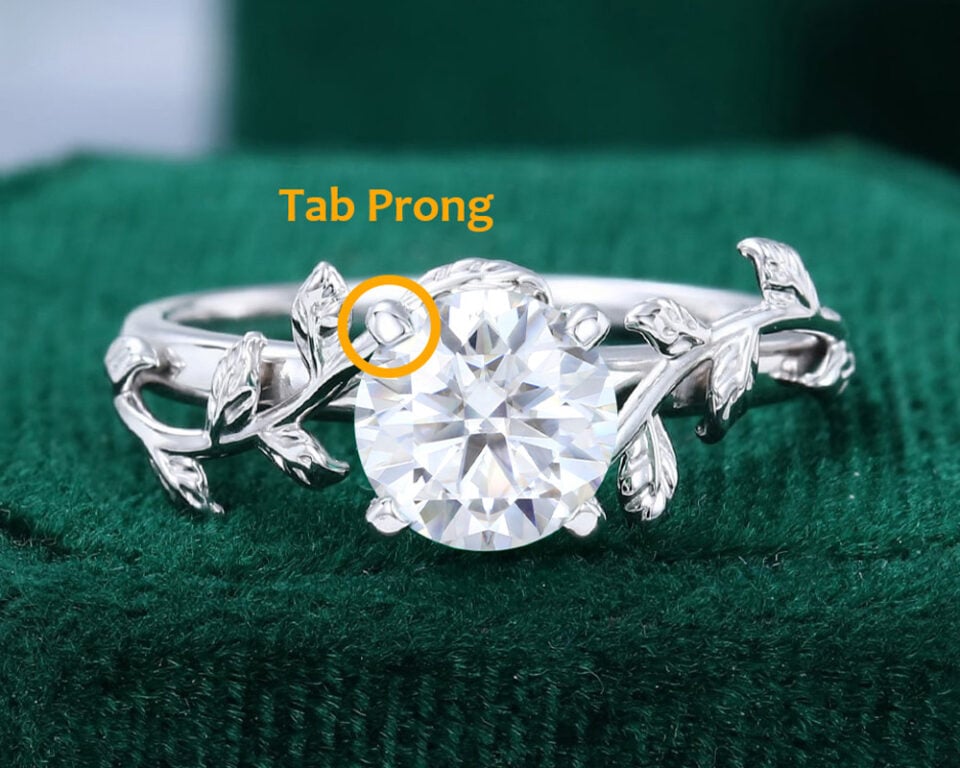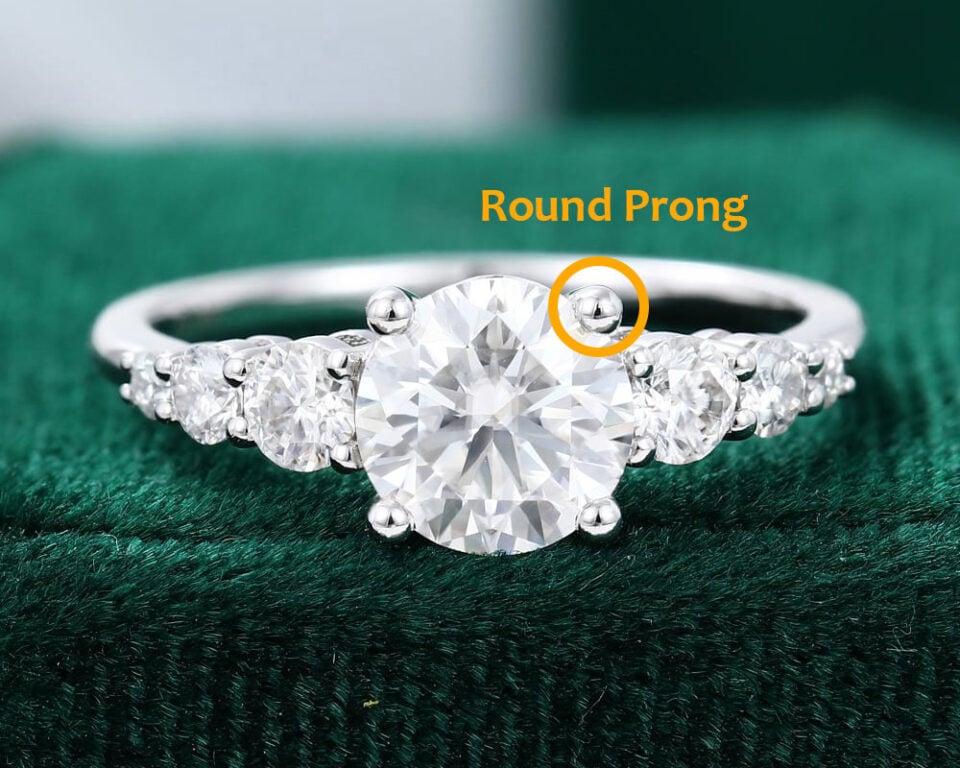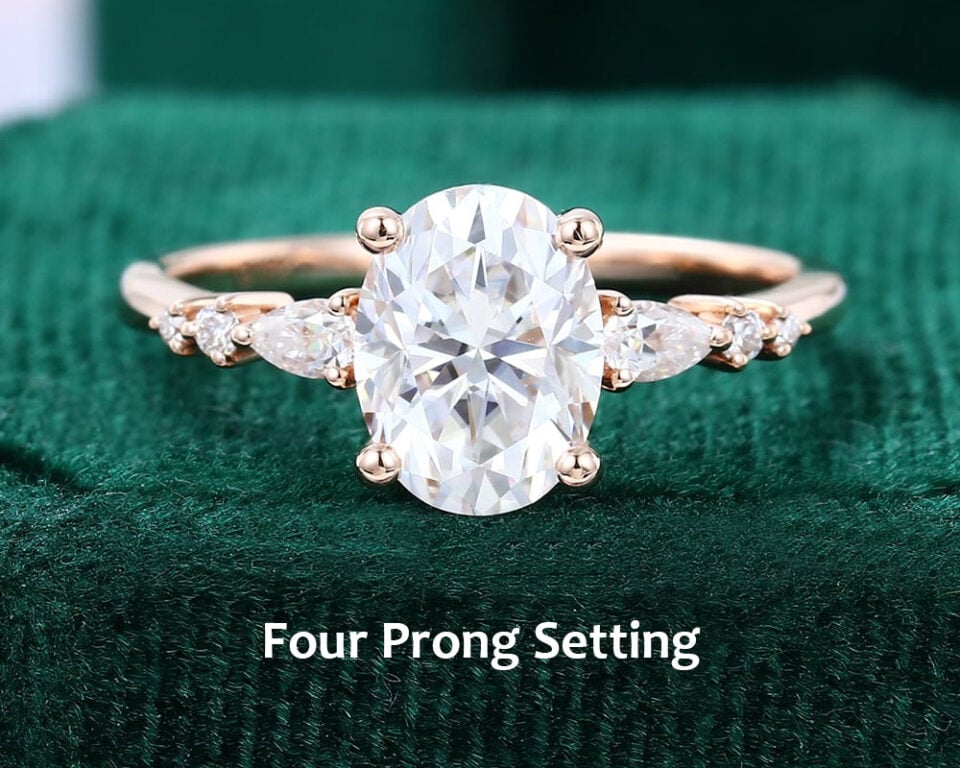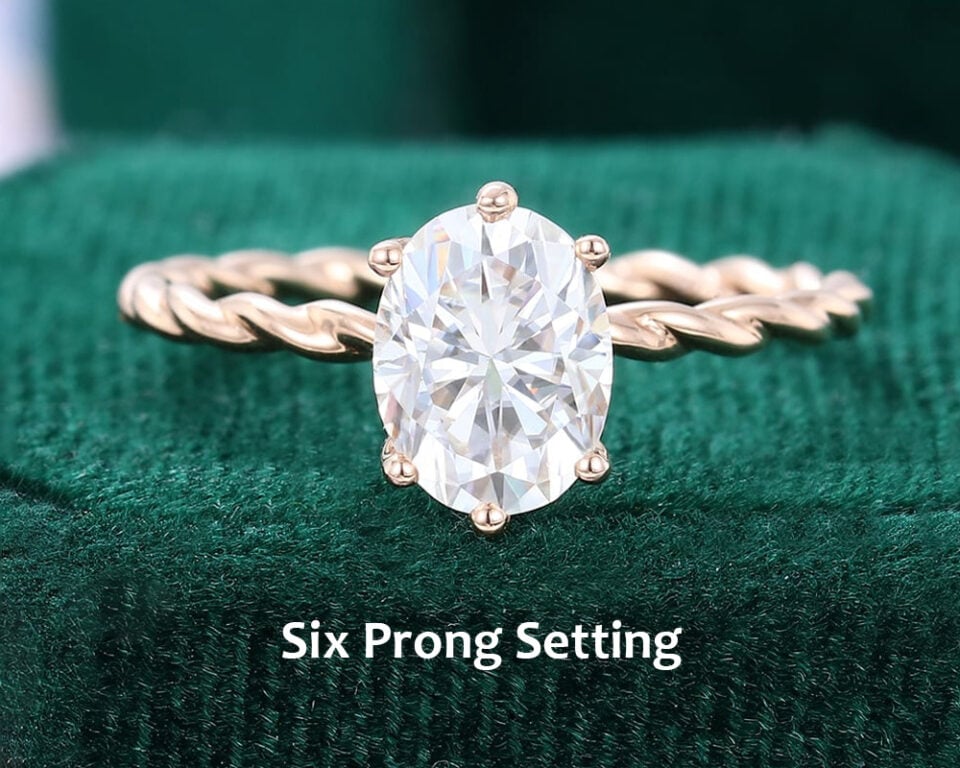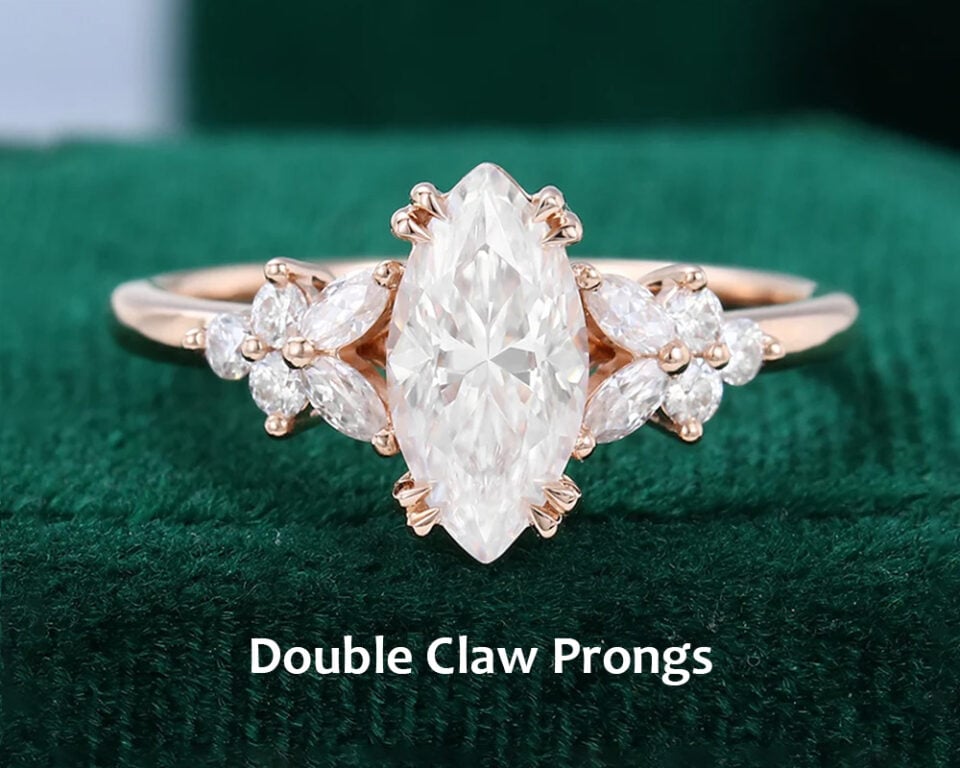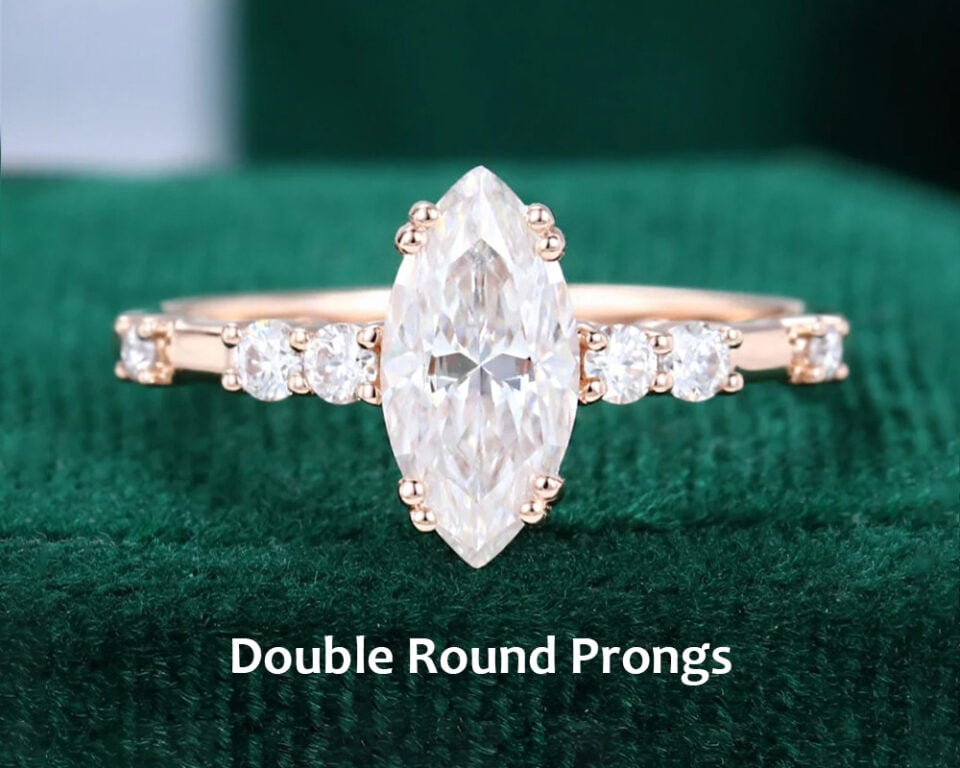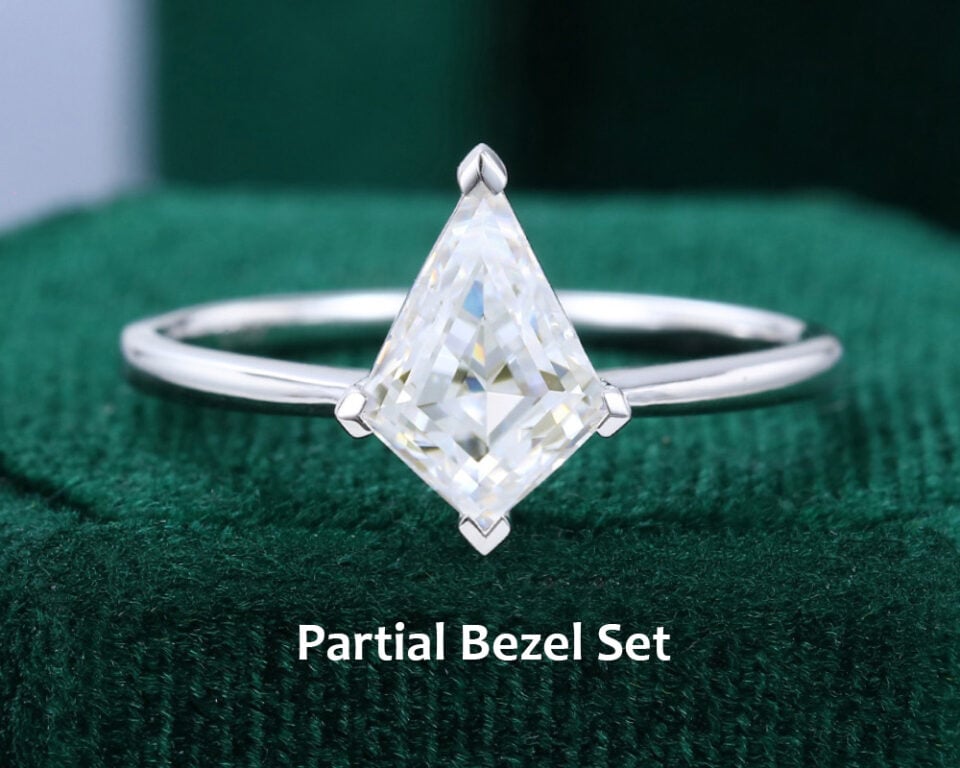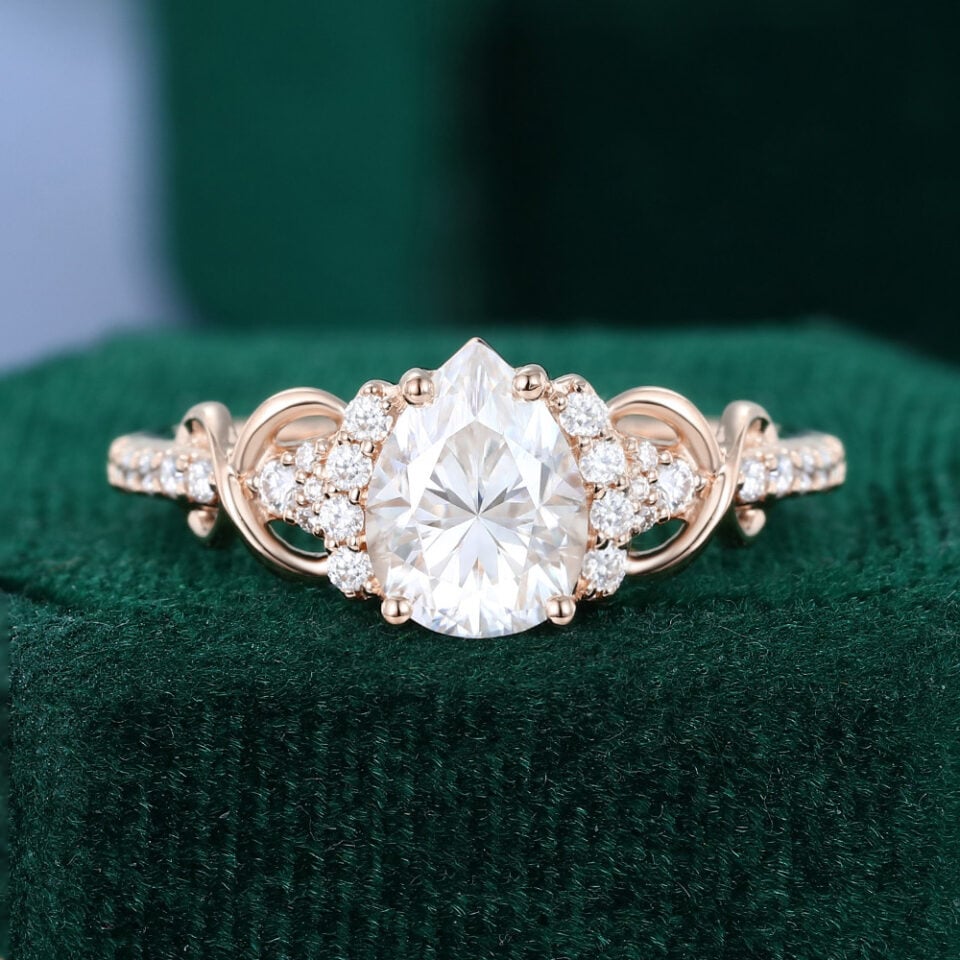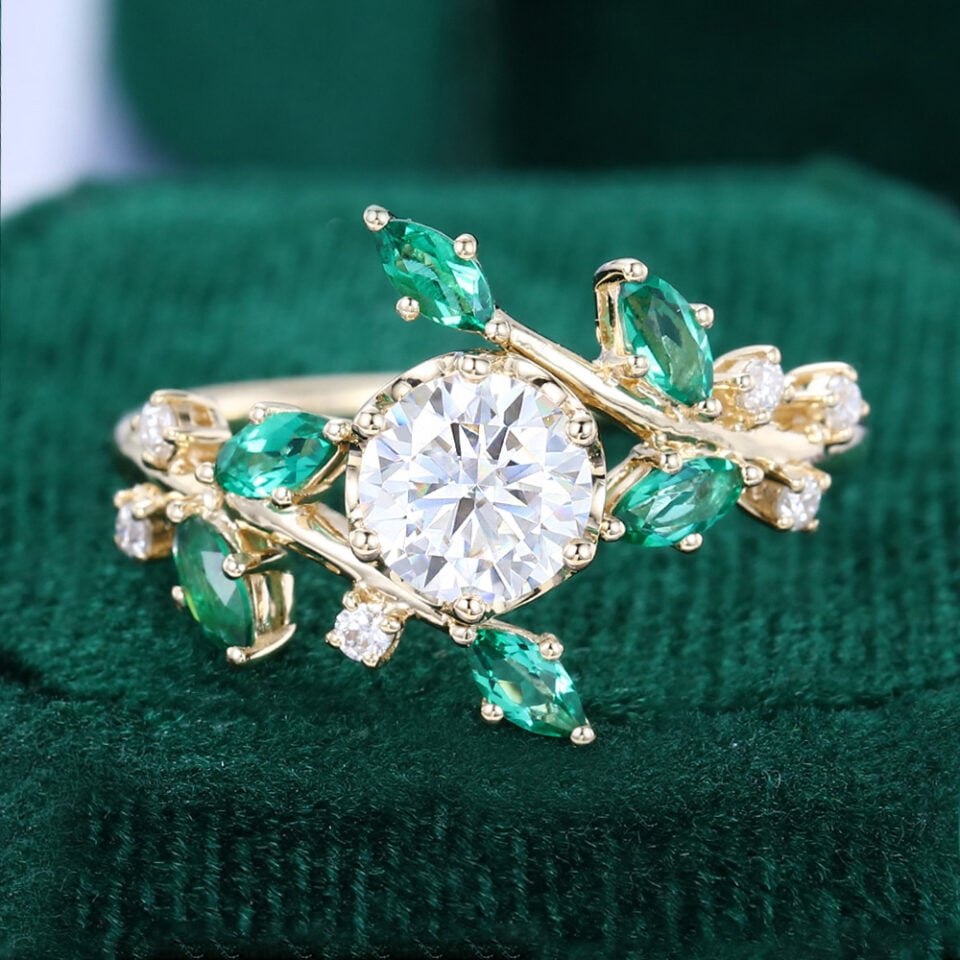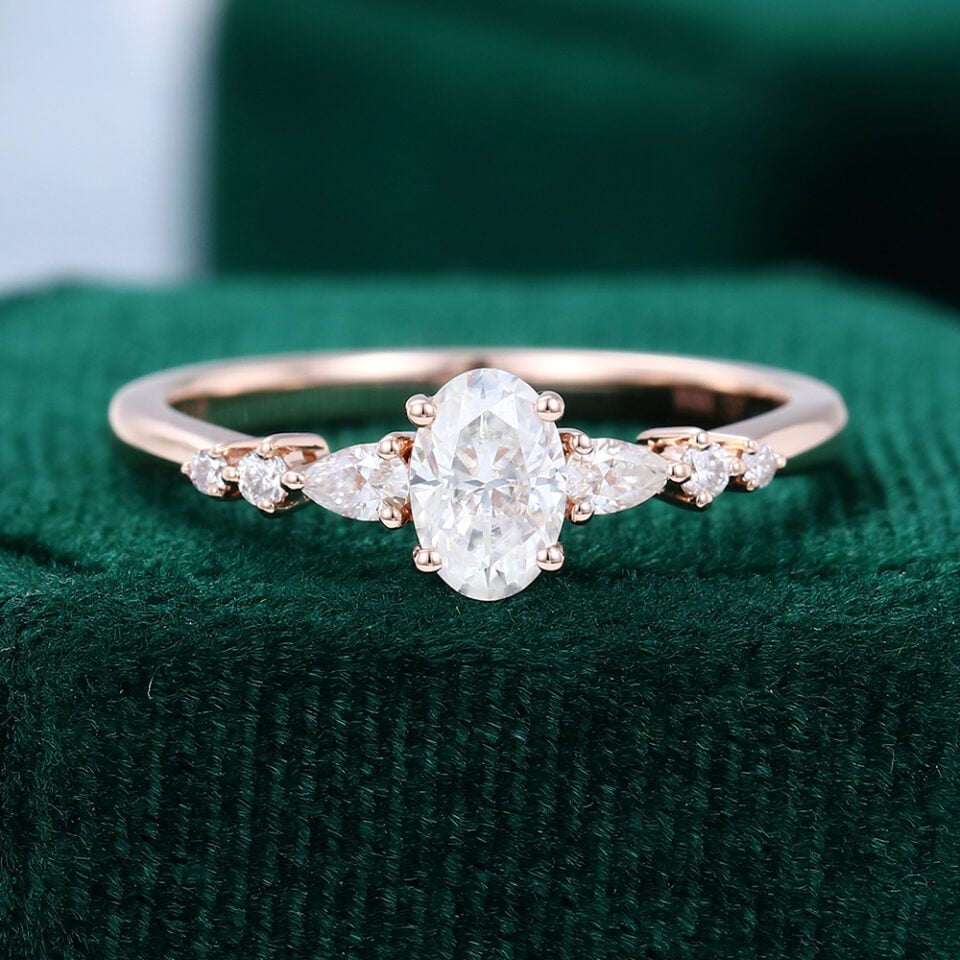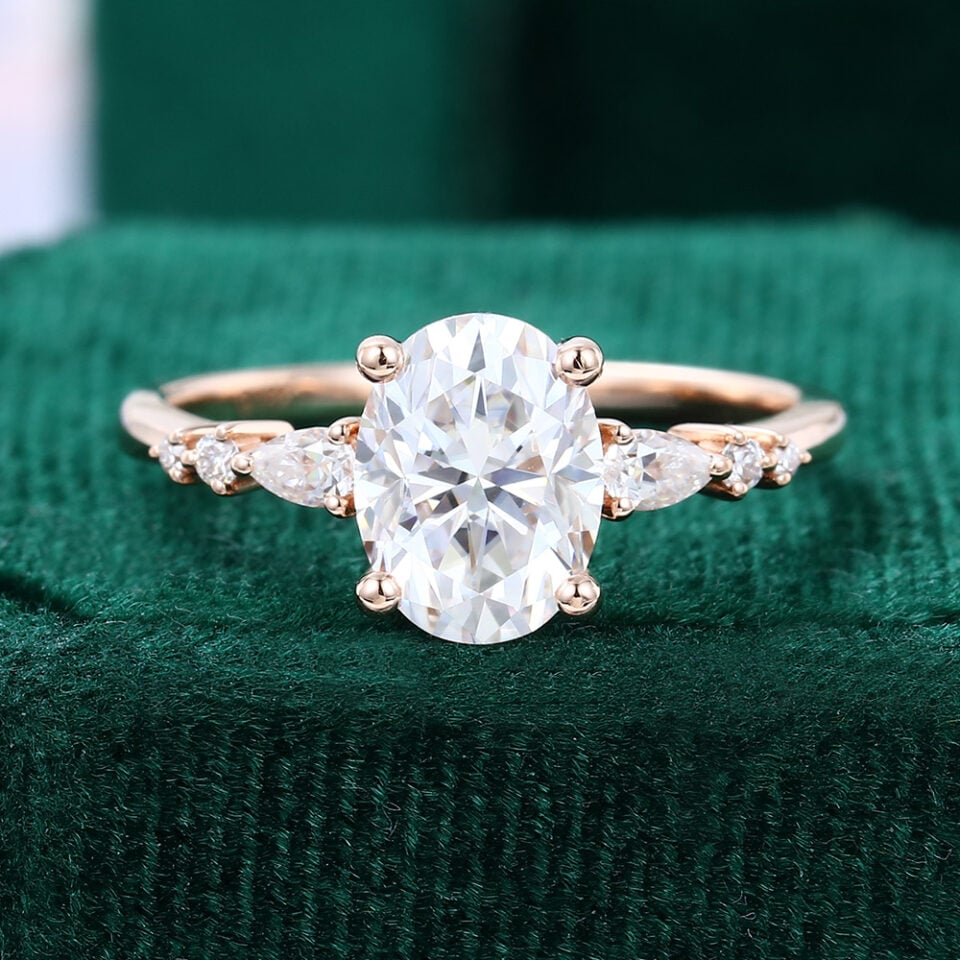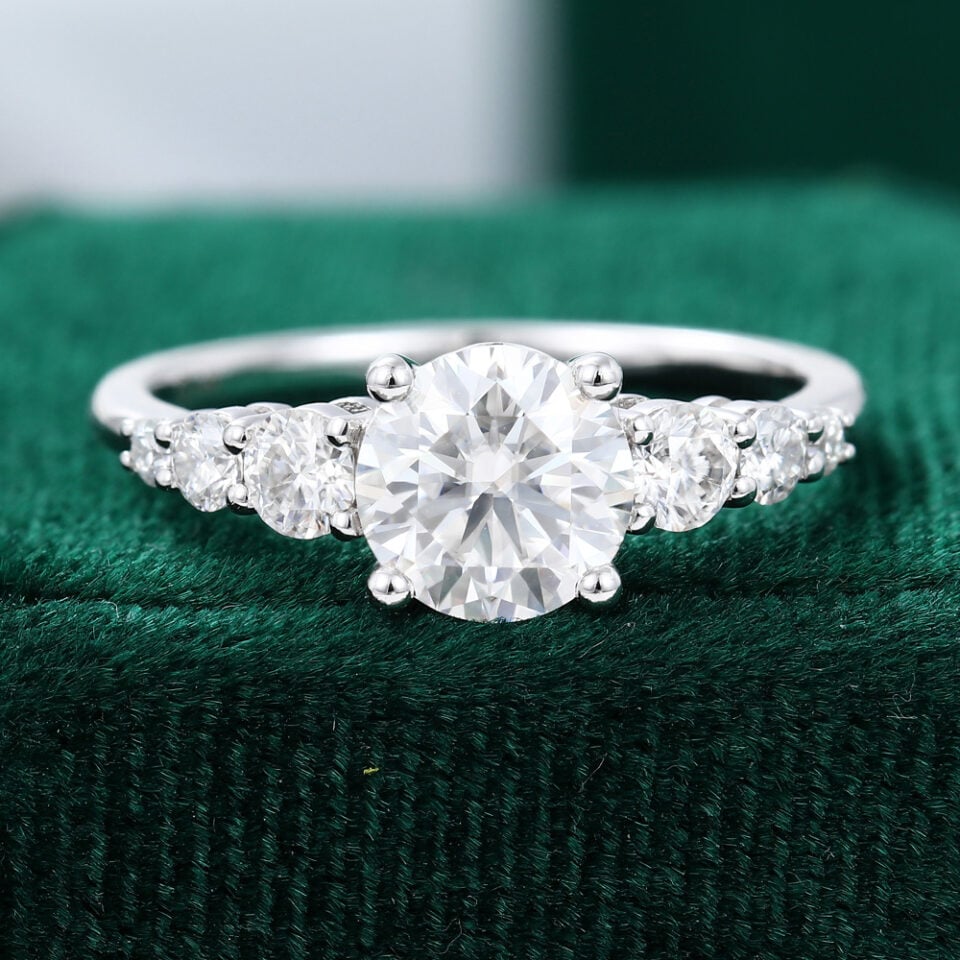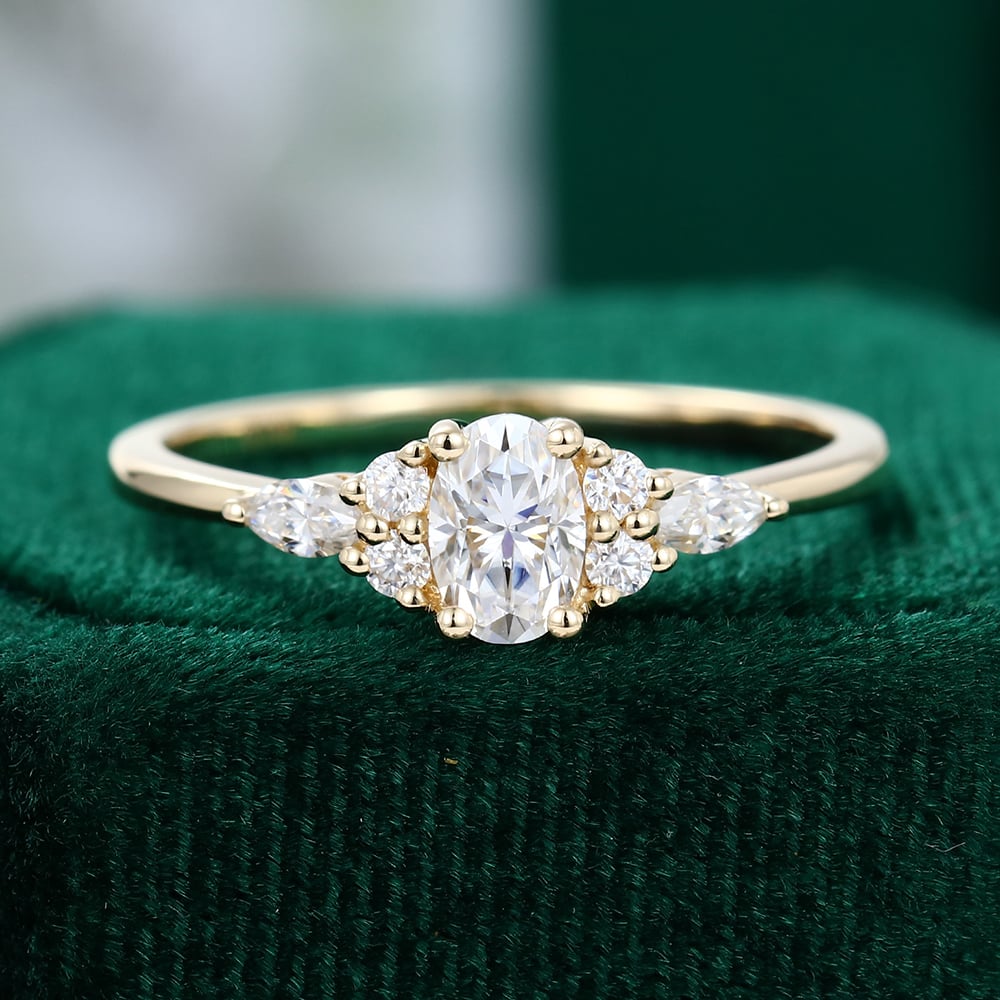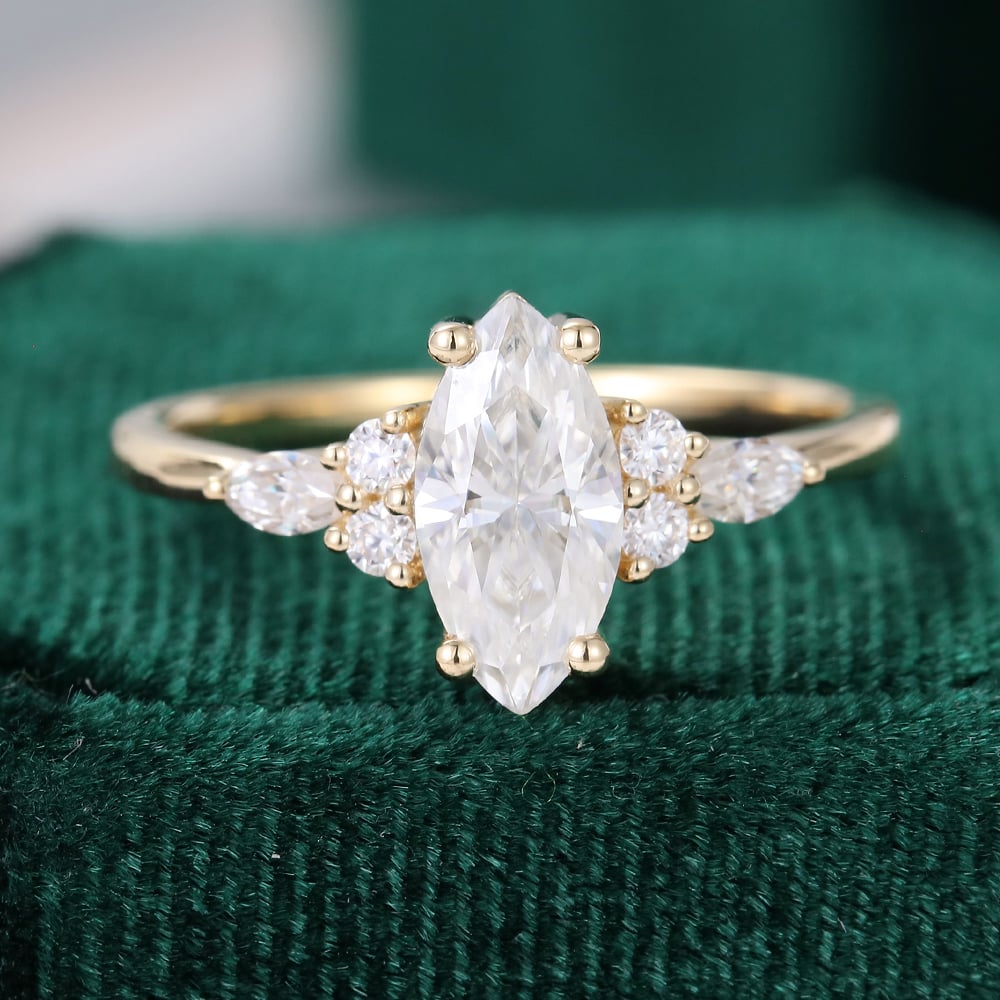- by Freya Miller
- August 15, 2025
- About Moissanite, Jewelry Guide
Introduction — Why the Setting Matters As Much As the Stone
Introduction — Why the Setting Matters As Much As the Stone
Did you know that the engagement ring setting determines how your moissanite looks, wears, and lasts? It shapes light return, protects the stone in everyday life, and decides how easily you can stack a wedding band. Because moissanite is naturally bright and fiery, some settings will maximize sparkle while others create a calmer, shape-forward look. The “right” choice balances three things: your lifestyle, your design taste, and the profile height you prefer (high vs low).
Part 1: Core Center-Stone Setting Types For Engagement Rings
Part 1: Core Center-Stone Setting Types For Engagement Rings
1) Prong Setting
1) Prong Setting
The classic: metal claws grip the stone at the girdle, letting in maximum light and making the center visually larger. These prongs come in round, pointed (also known as claw prong), and V-shaped (also known as cornered prong), and some nature-inspired designs even feature unique leaf-shaped prongs.
Common prong counts are 4 and 6, but you may see 3 and 5 used in some stone shapes. Both round and pointed prongs can be made into a split style, which is the double prong setting.
2) Bezel Setting (Full & Partial)
2) Bezel Setting (Full & Partial)
A rim of metal wraps the stone. A full bezel encircles it completely for top-tier protection; a Partial bezel (also known as semi-bezel) leaves some areas open for more light. Clean, modern, and very secure—great for active lifestyles and for stones with corners.
Part 2: High-Set vs Low-Set Engagement Rings
Part 2: High-Set vs Low-Set Engagement Rings
Beyond the type of setting itself, another important design choice is how high or low the stone sits in relation to the band. Both high-set and low-set styles have their own look, feel, and functional benefits.
1) Prong Settings with Different Setting Heights
1) Prong Settings with Different Setting Heights
The prong setting is the most versatile when it comes to height.
· Flush Low-Profile Setting
· Flush Low-Profile Setting
In this style, the center stone is held with prongs but designed to sit very close to the finger, creating a sleek and practical look. With its security of prongs and the comfort of stones that do not rise too high above the band, it makes an excellent choice for those who want everyday wearability without sacrificing the brilliance of a prong-set gem in a finger-hugging way.
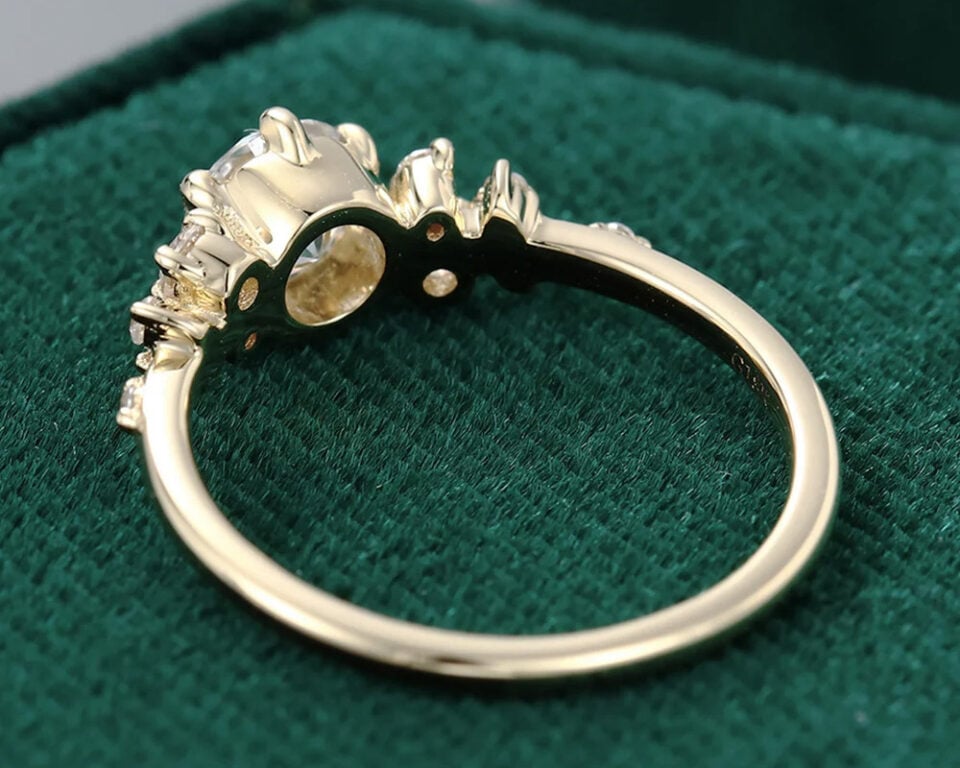
· Basket Setting (Medium Profile)
· Basket Setting (Medium Profile)
This style uses horizontal metal bars to form a “basket” that cradles the stone. It’s usually raised slightly above the band to maximize sparkle while maintaining practicality for everyday use. As it’s one of the most common used setting, we can also find some creative with this structure: sometimes the basket is set with tiny stones that sparkles only when viewed from the side (also known as hidden halo engagement ring); or, the bars are polished into slender vertical rods so that from the top view they resemble a milgrain bead detail, adding vintage charm. Whether kept simple or highly decorative, the basket offers both security and a versatile canvas for subtle design flourishes.
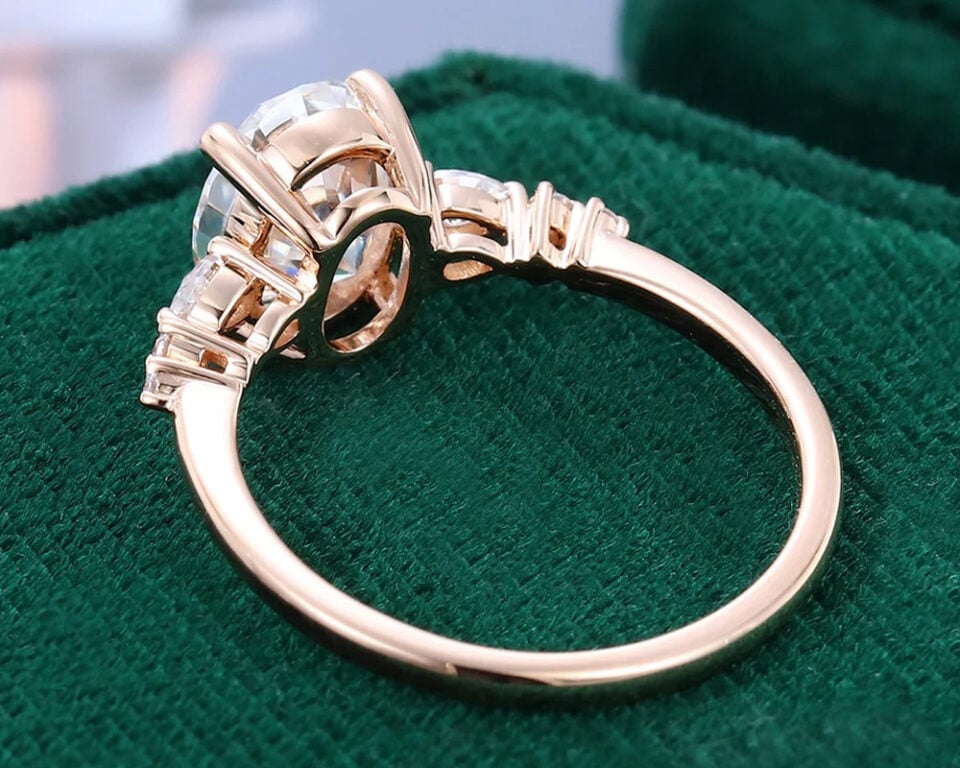


· Peg Head Setting (High Profile)
· Peg Head Setting (High Profile)
Here, the prongs and head are attached to a separate base or “peg,” lifting the stone prominently above the shank. This high-profile style showcases the stone dramatically and allows light to enter from all angles.

· Cathedral Setting (High Profile with Arches)
· Cathedral Setting (High Profile with Arches)
In this elegant variation, the shoulders of the band sweep upward in arches, meeting the prongs to support the center stone. The cathedral style naturally elevates the gem, adding a graceful and architectural presence.
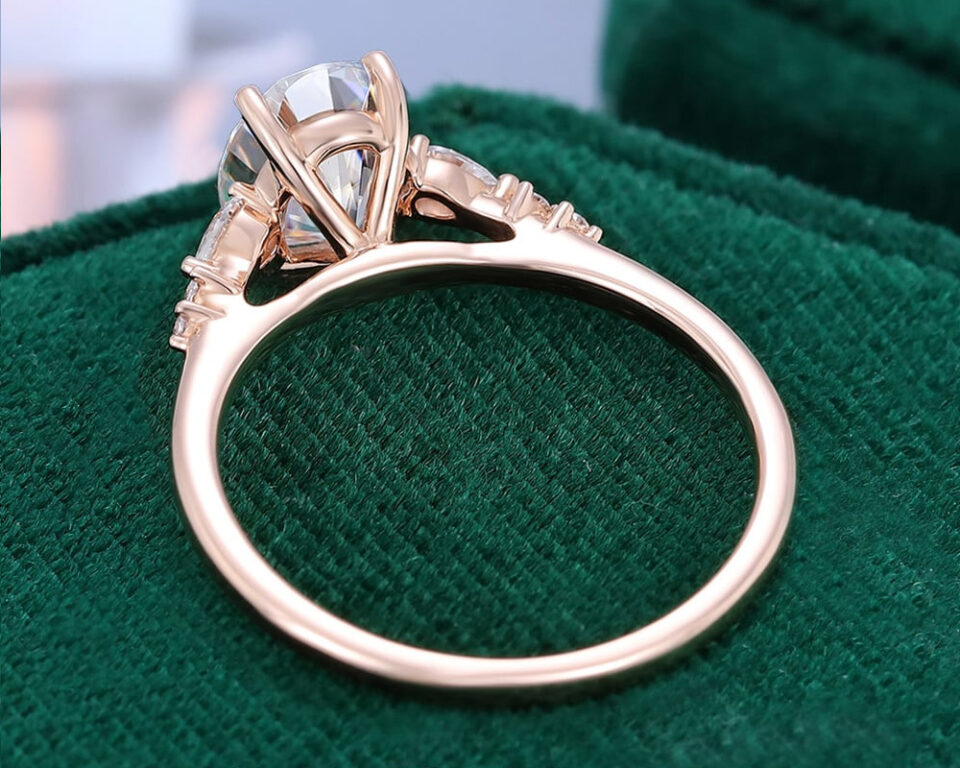
· Mixed Setting Heights
· Mixed Setting Heights
When side stones are added to the design, the center stone can be raised higher while keeping side stones lower, adding depth and a layered effect.
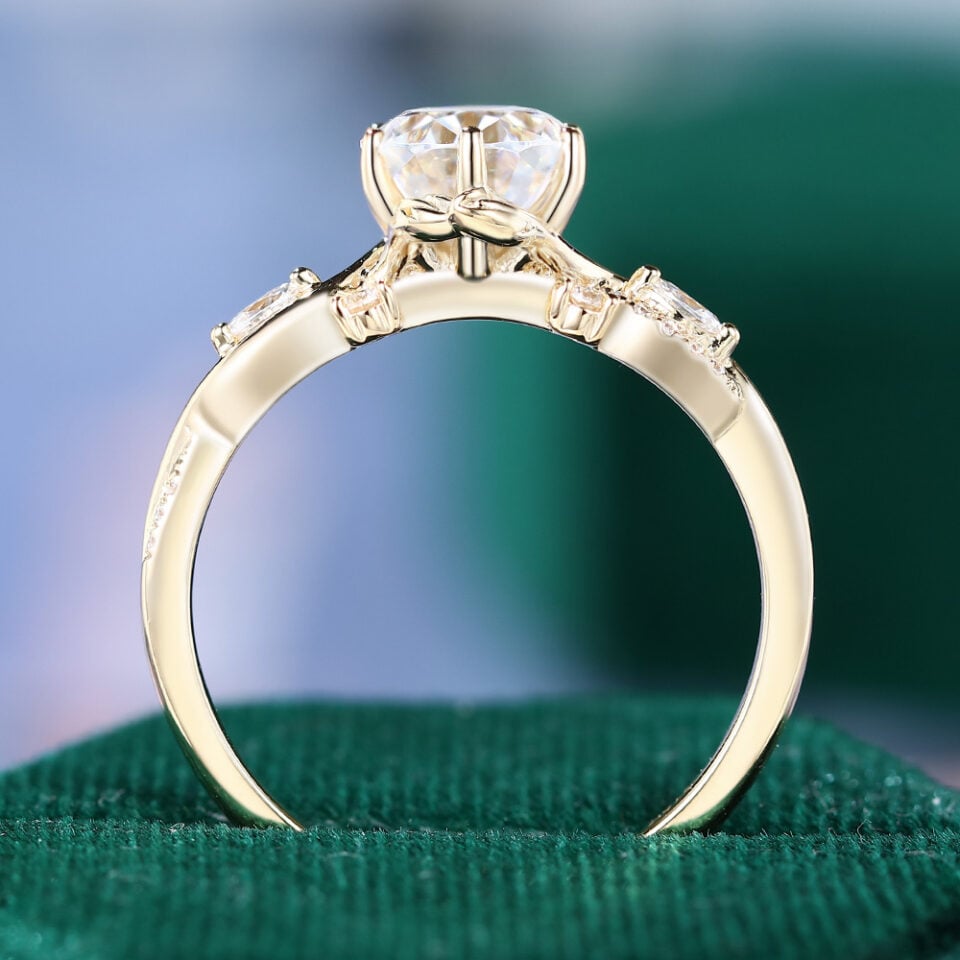
2) Bezel Settings with Different Setting Heights
2) Bezel Settings with Different Setting Heights
Bezel settings also vary in height:
A high bezel lifts the stone above the band, giving it a stronger presence while still keeping it secure within a rim of metal.
A low bezel makes the stone flush with the finger, providing maximum protection and a sleek, modern profile. However, depending on the thickness of the gemstone, not everyone can be made into low bezels.

3) Style & Practicality
3) Style & Practicality
High-set engagement rings draw in more light, emphasize the center stone, and often pair beautifully with wedding bands that tuck underneath the raised setting. Low-set engagement rings, on the other hand, are less likely to snag on clothing and feel more comfortable for everyday wear.
The trade-off is that most wedding bands will not sit flush against the engagement ring. To achieve a seamless look, they typically require a curved wedding band that contours around the setting, or an open-ended band that leaves space for the center stone.
Part 3: Moissanite’s Durability and Setting Considerations
Part 3: Moissanite’s Durability and Setting Considerations
One of the reasons moissanite stone is such a popular choice for engagement rings is its impressive hardness of 9.25 on the Mohs scale. This durability means it can be confidently set in nearly every type of mounting, from delicate prongs to protective bezels, even tension or flush styles. Unlike softer gemstones, you do not have to worry about moissanite wearing down quickly or being unsuitable for certain settings.
That said, there are still a few important precautions to keep in mind when selecting your setting:
Protect the Points
For fancy shapes with sharp tips (pear, marquise, princess, heart), make sure the design includes V-prongs or protective tips to shield the edges from accidental knocks.Choose Enough Prongs
Minimalist designs sometimes use three-prong settings, but we generally recommend four or six prongs to balance security and sparkle. A higher prong count keeps your stone safer, especially in daily wear.Metal Coverage vs. Sparkle
A bezel or tab prong provides excellent protection but can cover more of the stone. If you want maximum light performance, thinner prongs or open-style settings are better. Think about how much security versus sparkle matters to you.Lifestyle Fit
High-profile rings showcase brilliance but may snag on clothing or gloves. Low-profile or flush low-profile settings sit closer to the finger, making them more comfortable and practical for active lifestyles.
In short, moissanite’s durability gives you the flexibility to explore almost every setting style, but thoughtful design choices—like the number of prongs, protective tips, and profile height—make sure your ring is both dazzling and secure.
Part 3: Choosing the Perfect Engagement Ring Setting for Your Lifestyle
Part 3: Choosing the Perfect Engagement Ring Setting for Your Lifestyle
Not every engagement ring setting works equally well for every lifestyle. Here are some general guidelines:
Active Lifestyles
If you live an active lifestyle, work with your hands, play sports, or wear gloves often, or simply want a ring that feels effortless, a low-profile setting (such as a flush low-profile prong or bezel) may be your best choice. These designs hug the finger, resist snagging, and are less likely to be damaged during daily activities.Everyday Professionals
For those in office or customer-facing roles, prong or cathedral settings add presence and sparkle without being too cumbersome. They balance style and practicality. Just keep in mind they may require a little more care to avoid snags.Sentimental & Heirloom Seekers
For those who value tradition and envision passing their ring down through generations, the prong setting is the choice for timeless elegance. It has been used for centuries and is strongly associated with vintage designs. A high-set prong offers space beneath the crown for intricate details, enhancing the artistry. A low-set prong, on the other hand, ensures practicality for everyday wear—important if the ring is meant to be treasured and worn for decades, or even handed down as an heirloom.
- Metal Matters
Beyond the setting style, your choice of metal plays a key role in how the ring performs over time. 14K gold offers a great balance of durability and affordability for everyday wear, while 18K gold brings a richer color but can be slightly softer. If you love the warm tones of yellow or rose gold, choosing 14K or 18K is usually the best option. If you prefer a silvery look, platinum is a superior choice—it requires far less maintenance than white gold or sterling silver while offering exceptional durability. Even a different finish can transform the personality of the same setting, making metal selection just as important as the setting style itself.
Part 4: Popular Moissanite Engagement Ring Styles
Part 4: Popular Moissanite Engagement Ring Styles
Now let’s connect the setting types to the designs couples love most:
Snowdrift | Half Carat Round Cut Moissanite Promise Ring Cluster Engagement Ring – Flip & Petite Accents
Conclusion
Conclusion
Moissanite’s durability gives you the freedom to choose almost any setting style, from classic prongs to sleek bezels, high-set cathedral designs to low-profile flush looks, just like a diamond engagement ring does. The best choice ultimately comes down to your lifestyle, your taste in style, and how you want your ring to pair with a wedding band. Whether you prefer a dramatic, sparkling presence or a practical, everyday-friendly design, there is a moissanite setting that fits your story.
If you would like to dive deeper into how engagement rings and wedding bands work together, check out our guide: Engagement Ring vs Wedding Band: Key Differences & How to Stack Them Together. And for those thinking the perfect engagement ring does exist, explore our showcase: Custom Moissanite Engagement Ring Examples—real stories that may inspire your own unique piece.
